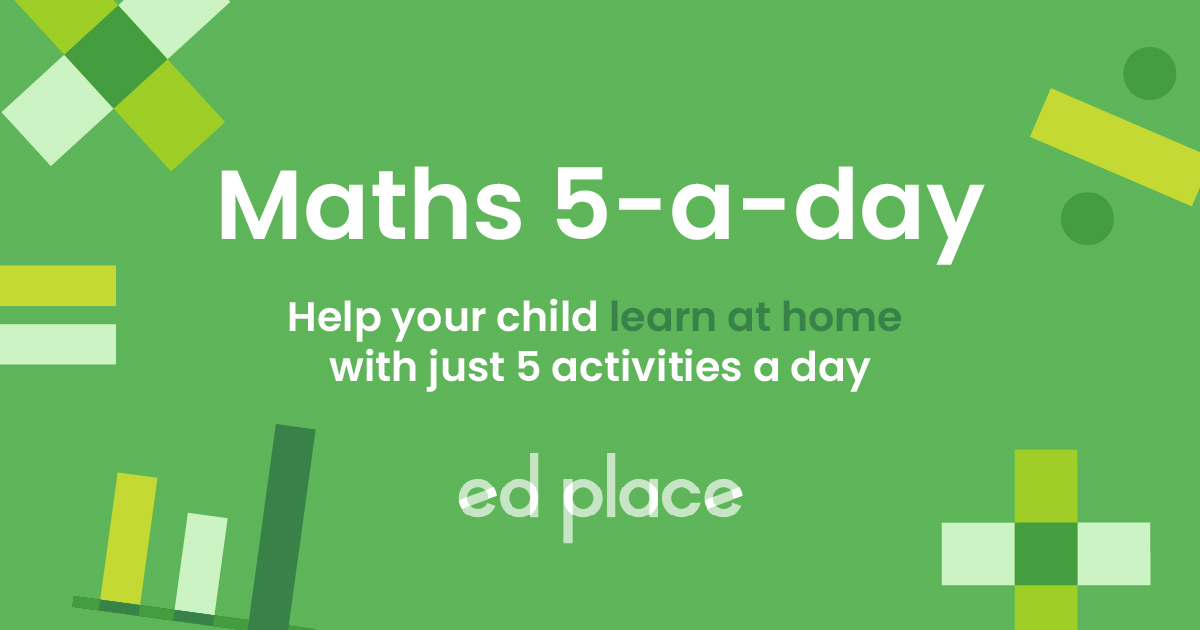
EdPlace's Upper KS2 home learning maths lesson: Rounding
Looking for short lessons to keep your child engaged and learning? Our experienced team of teachers have created English, maths and science lessons for the home, so your child can learn no matter where they are. Plus, as all activities are automatically marked, you really can encourage your child to be an independent learner.
Get them started on the lesson below and then jump into our teacher-created activities to practice what they've learnt. We've recommended five to ensure they feel secure in their knowledge - 5-a-day helps keeps the learning loss at bay (or so we think!).
Are they keen to start practising straight away? Head to the bottom of the page to find the activities.
Now...onto the lesson!
Going High or Low?
Ever heard your child say, “Four to the floor; five to the sky”? Did you think, “What?” Well... rest assured you are not the only one!
Rounding can be difficult; how do we know if we need to round up or down? This article will teach you how to round any whole number to any digit, up to 10 million!
We believe that if you follow our step by step approach your child will:
1) Understand how to round any whole number
2) Apply this to independent work
3) Explain to you how they completed their work
Step 1 - Why Use Rounding?
Why do we round? Rounding numbers make them simpler and easier to use especially when the numbers are larger. For example, instead of saying that the UK’s current population is 67,823,821, we might round it up to 68,000,000 instead. When rounded, the number becomes slightly less accurate, but the value is still relatively close to what it originally was and definitely much easier to say out loud!
Step 2 - Mastering key concepts first...
Your child will need to have an understanding of basic place value – the columns:

This number is: Thirty-two million, six hundred and nine thousand, five hundred and thirty-seven.
Step 3 – How to Use Rounding...
Now you’re ready to start learning how to round!
Rounding to the nearest ten: 354
Look at the tens column: 353
This number will either stay as a 5 or round up to 6. We look at the column to the right to decide – in this case, the one's column.
In the one's column, there is a 4. Now we say, “Four to the floor; five to the sky” – basically, if the digit is 4 or lower, we round down (keep the digit the same); if it is 5 or higher, we round up.
In this case, we have a 4, so we round down: 354 rounded to the nearest ten is 350.
The digits before the column you are rounding to all stay the same.
The digits after the column you are rounding to all become zero.
And... the good news is we can do this with any number:
Rounding to the nearest ten: 2,643,529
Look at the tens column: 2,643,529
This will either round down to 2 or round up to 3.
We check the column to the right of the tens – the one's column.
2,643,529
The digit is a 9 so we round up: 2,643,529 rounded to the nearest ten is 2,643,530.
We can round to any multiple of ten. Remember to look at the column you are rounding to and check the column to the right.
All the digits before the column you are rounding to stay the same and all the digits after the column you are rounding to become zero.
Rounding to the nearest thousand: 5,072,514
Look at the thousands column: 5,072,514
Check the column to the right: 5,072,514 – in this case, the hundred column
It is a 5, so we round up – 2 becomes 3.
All the digits before the column you are rounding to stay the same and all the digits after the column you are rounding to become zero.
So 5,072,514 rounded to the nearest thousand is 5,073,000.
Step 4 – Ready to Round?
Now have a go at these examples together:
1) Round 5,361 to the nearest ten.
2) Round 72,168 to the nearest 100.
3) Round 803,763 to the nearest ten thousand.
Challenge questions:
4) Round 6,998 to the nearest hundred.
5) Round 159,687 to the nearest thousand.
Step 5 – Get Practising
Now that you’ve learnt long division together, see if your child can apply their learning to the following 5 activities. Have them complete them in this order:
All activities are created by teachers and automatically marked. Plus, with an EdPlace subscription, we can automatically progress your child at a level that's right for them. Sending you progress reports along the way so you can track and measure progress, together - brilliant!
Activity 1 - Round Numbers to the Nearest Thousand
Activity 4 - Round Numbers to the Nearest 10, 100 or 1000
Activity 5 - Estimate the Answer to an Addition by Rounding
Answers
1) 360
2) 72,170
3) 800,000
4) 7,000









